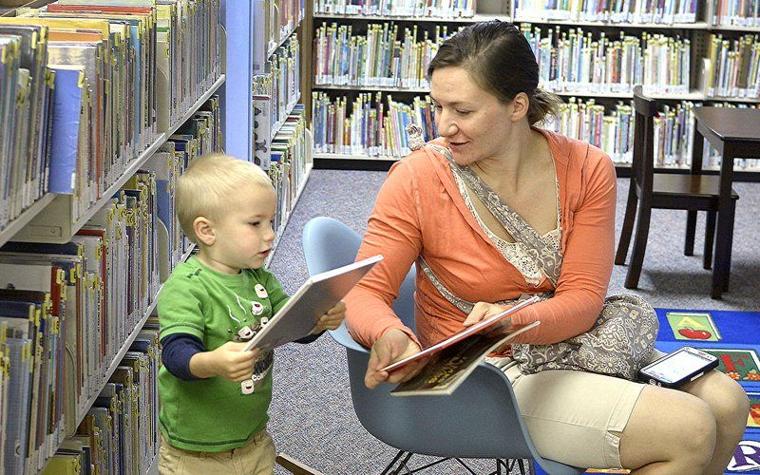When I encounter organizations without a culture of philanthropy, I inevitably find one shared trait.
They are embarrassed by fundraising.
For this reason, they tend to hire a development staffer, put him/her in the corner and tell them to “Go forth and fundraise.” No one else wants to get their hands “dirty.” Because they think it’s about money; not impact.
If this is you, then you’re inevitably going to limp along with fundraising, leaving lots of money on the table. You’ll also disappoint those donors you do have; they won’t get the rich, fulfilling experience they deserve.
If this sounds like your culture, then you – and your donors – have a problem:
Your problem may be one of three different colors:
1. Your organization doesn’t really need much philanthropy [GREEN]
In organizations where contributed income is just a tiny slice of the budget, it’s difficult to persuade non-development staff to get on board. They don’t see it as essential. All signs point to “Go” and no one is afraid of being stopped in their tracks due to lack of donors.
2. Your organization relied in the past on sources of income that are drying up; now you need more philanthropy [ORANGE]
Increasingly, organizations that have relied on government funding are finding that significant cutbacks are threatening their very survival. Yet they’ve no history of annual individual giving. Nor have they maximized funding from foundations and businesses. Here, warning signs point to “Caution Ahead” – yet no one quite knows the way forward.
3. Philanthropy is essential to your existence.
In organizations that cannot exist without philanthropy, cutbacks in any area (or failure to grow contributions) can point to “Danger.”
Here’s the kicker: Whether the signs at your organization are green, orange or red, your donors don’t care. For them, there’s no difference.
Stop for a minute to think about your donors.
Donors want to enact change. They can’t do it on their own. By themselves, they can’t provide at-risk kids with a college education. They can’t build a hospital. They can’t end homelessness. They can’t find a cure for cancer. They can’t clean up a polluted river. They can’t stop sexual trafficking. But through you, they can. They need you and your organization to find the meaning they seek.
For them to get this significance – the impactful expression of their values — they need to know what their giving accomplished. They need to feel valued and appreciated. Not just once, but on an ongoing basis. Not just by the development director, but by the entire organization.
So… whatever color of signs your organization may be hoisting, they all point to the same cure.
Embrace donors as part of your mission.
Ask not what your donors can do for you, but what you can do for your donors.
Recognize they don’t serve you; you serve them. They don’t owe you; you owe them. Your job is to help them experience the joy of giving. It is through you they will achieve their most meaningful work.
Do unto others as you would have them do unto you. If your donors are sending love your way, it’s incumbent on you to send love back their way.
And donors aren’t just loving the development department. Far from it. They’re loving the leadership of the E.D. and board… the work of the program staff… the teachers… the doctors… the social workers… the volunteer coordinators… the administrative staff who answered their questions and treated them with warmth and caring.
Everyone in your organization is responsible for philanthropy.
Everyone either contributes to making it happen, or to making it unlikely for it to happen. No one is exempt. Because donors don’t care which department someone works in. They only see one organization.
“The ability to move others to exchange what they have for what we have is crucial to our survival and our happiness. It has helped our species evolve, lifted our living standards, and enhanced our daily lives. The capacity to sell isn’t some unnatural adaption to the merciless world of commerce. It is part of who we are.”
He says: “We’re all is sales now.” I say: “We’re all in fundraising now.” We’re all involved in the process of inviting donors to invest in our mission to make a difference in the community.
Get everyone on board
How do you get folks toy step up to play their appropriate fundraising roles, whether direct or indirect? How do you help them to see fundraising as a noble pursuit?
You must begin by helping all staff and volunteers of your organization recognize they have a vested interest in development. Granted, this is easier if you’re a “red” philanthropy because here the connection between donors and mission is crystal clear. Without donors, you can’t exist.
But even where philanthropy can be considered an “extra” there are important benefits that derive from contribution income.
- Begin by assuring everyone is well-informed of development’s impact. What programs does it make possible? What would change were philanthropy to dry up?
- Talk to everyone about your mission to help donors be the change they want to see in the world. It’s a noble mission to facilitate philanthropy, and one of which to be very proud. It’s a mission almost anyone would want to embrace – once they understand.
- When everyone becomes a philanthropy facilitator something amazing begins to happen. Since everyone’s doing it, it begins to feel more natural. People begin to share stories with one– another. Folks begin to take pride in asking, knowing they are offering people who share the values the organization enacts an opportunity to partner with you to endorse their own values. Asking seen this way begins to seem like a noble pursuit, rather than a sleazy one.
For too long fundraising has been approached as transactional – as being primarily about money. This approach results in fundraising being seen at best as an onerous chore; a necessary evil. Your job is to help folks see that philanthropy is fundamentally social; it’s about love — and nothing could be more transformational.
6 Ways to Shift the Needle towards a Philanthropy Culture
1. Articulate philanthropy’s role in advancing the organization’s mission and values.
Staff need to be able to see how fundraising “fits” within the organization and how it is essential and noble work. The more you help all staff understand that development enables the organization to sustain, strengthen, and expand its service, the more cooperation and ownership you’ll encourage.
ACTION TIP: Consider having a development staff member attend department staff meetings once a month to report back on current developments in philanthropy. Also invite program staff to attend development staff meetings.
2. Lead from the top.
There’s no substitute for this. The E.D. and board must preach religion on this topic. It must be clear that donors are valued participants in your mission and that all staff are their equally valued partners.
ACTION TIP: Have the leadership discuss the importance of philanthropy to the organization at all-staff meetings, executive team meetings, supervisors meetings and at public gatherings. Development should always be on the agenda.
3. Create opportunities to engage in development activities.
There are many ways for staff, board, and volunteers to participate in development activities ranging from identifying potential donors, to cultivating relationships, to soliciting gifts, to thanking and stewarding donors.
ACTION TIP: Include development responsibility in the job description of every employee (e.g., an expectation that each co-worker will devote at least 10% of his/her work hours to development-related activities, appropriate to the positon the individual holds in the organization).
4. Keep everyone – staff, volunteers and donors – in the loop.
Connect the dots for each other. Development staff should make a regular practice of telling other staff and volunteers what a great job they did, reminding them it is theirwork that resulted in an act of philanthropy to continue your mission. Make it clear that philanthropy happens because of needs being successfully addressed by your entire organization; not because of development staff. Make all of your staff and volunteers – your entire village – the heroes.
ACTION TIP: Set aside 20 minutes at the end of the day once a week to come together to share stories of donors, the individuals whose lives have been changed by the donors’ gifts and the internal constituents who had a role in bringing about the donors’ gifts. This helps to impress upon staff the difference their actions, words and witness can make in bringing about gifts to your organization (serve refreshments)!
5. Make customer service your top priority.
Commit to truly incorporating this philosophy into your culture. For-profits retain 94% of their first-time customers; nonprofits keep only 27.3% of their first-time donors. Why? There’s a big difference between “the customer is always right” and “donors are a necessary evil.” We know from research that the single biggest driver of donor loyalty is the service they receive. Every contact with donors must contribute towards the goal of building satisfaction, commitment and trust. This has to be part of everyone’s job.
ACTION TIP: Become the Nordstrom’s of nonprofits. Make customer service part of new employee orientation. Make it part of your employee handbook. Include it in job descriptions and performance evaluations.
6. Incorporate an attitude of gratitude into your culture.
The importance of this shift towards a gratitude culture is that it takes you away from the mercenary “all we care about is your money” perception and shifts you to a critically important “we care about you” culture. Put yourself in the shoes of your donors. Remember, they are your constituents too! If you want your donors to stay uplifted by their philanthropy you’ve got to practice gratitude continually, as a way of life. And it takes a village. To feel part of your family, it’s helpful for donors to have multiple points of contact.
ACTION TIP: Your donor took care of you; now you take care of your donor. Talk internally about what you’re grateful to your donors for. Then set aside some organization-wide time for saying thank you [see Borrow from Jimmy Fallon to Keep More Donors].
Don’t apologize for fundraising. If your organization is meeting valued needs, then it’s your responsibility to raise funds to assure your mission continues. Fully embrace this shared obligation and intentionally work at building an internal culture of philanthropy. When you do, you’ll put yourself in the best position to survive and thrive.
“When anyone walks through the doors of the organization what is felt is love, empathy, righteous anger, grace, hard work, personal care, and…more love.”









